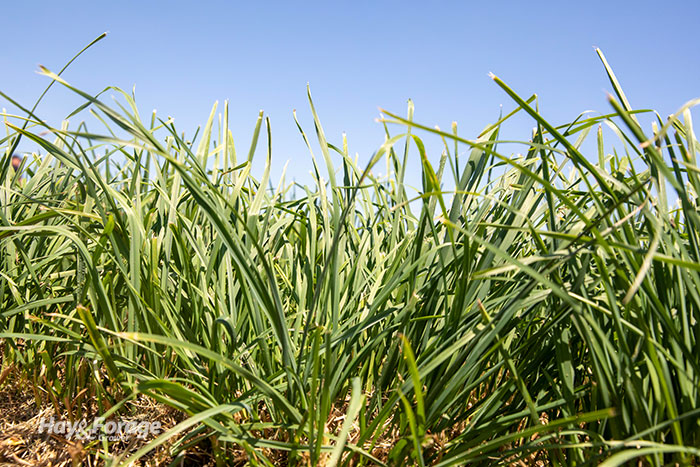
As I sit here in the Bozeman, Mont., airport waiting for the Boeing 737 with my name attached to it, I’m pondering the fact that once again orchardgrass has been a big part of this trip. Both the commercial hay producer and beef rotational grazing operations I visited a day earlier had made orchardgrass a foundational forage of their respective farms.
I can’t count the number of times that this same scenario has played out in different parts of the country.
To be sure, I have run into farmers and consultants who absolutely hate orchardgrass for various reasons, including its bunchgrass nature and occasional proneness to winterkill. That doesn’t change the fact that orchardgrass is the dominant cool-season grass species in many regions.
Although widespread in the U.S., orchardgrass is not native to our soils. It originated in Europe and North Africa and only produces a seedhead during its initial spring growth cycle. The subsequent growth during the remainder of the summer consists essentially of leaf material that is soft and palatable to livestock. It’s these subsequent cuttings and grazings that bring most farmers into the orchardgrass fold.
Orchardgrass is relatively easy to establish compared to many grass species. Like all grasses, nitrogen is needed to realize its full yield and quality potential.
Variety advantage
Unlike many cool-season grasses, there are a plethora of orchardgrass varieties to choose from. One of the key differentiating features of these varieties is maturity. Selecting a late-maturing variety is important when including the grass in alfalfa stands. This helps prevent the orchardgrass from becoming cordwood by the time the alfalfa reaches an ideal harvest maturity in the spring.
One of the problems that some producers experience with orchardgrass is foliar disease. Varieties differ substantially in their ability to resist disease, especially leaf pathogens. Make sure you’re selecting an orchardgrass variety that has strong disease resistance.
In some regions, winter survival is also a problem. Once again, this can vary with the variety planted.
The number of orchardgrass breeding programs and also the number of variety performance trials have declined in recent years; however, some universities still carry out this worthwhile mission, including the possibility of a “headless” variety.
Research has shown that orchardgrass varieties behave differently in different environments. In other words, an orchardgrass variety grown at one location may take on different characteristics in terms of maturity and yield at another location.
This finding makes selecting a high-performing orchardgrass variety for a specific region more difficult unless you happen to be near a variety testing site or are willing to experiment yourself. Most orchardgrass varieties are marketed nationally, but not all may be adapted as such. Even though there are huge differences in orchardgrass performance, those differences get shuffled from region to region.
Perhaps the differing opinions of using orchardgrass in pastures and hayfields can be partly attributed to an individual’s experiences with a specific variety that was either well suited or not well suited to the specific location.
Wide range of utilization
On my trip to Montana, the vast range of orchardgrass’s utility was on display. A commercial hay grower was growing pure stands of the grass, but he was also interseeding orchardgrass into his 3- or 4-year-old alfalfa stands as they thinned. This extended the useful life of the stands by three or four additional years. It also gave him an alfalfa-grass hay product to market. I’ve seen this same approach used on farms from coast-to-coast.
The Big Sky State also offers plenty of beef grazing. The ranch I recently visited was rotationally grazing under pivot irrigation, moving cows every one or two days. Their pasture mix included sainfoin and cicer milkvetch for legumes, but it was orchardgrass that dominated the grass component. That latter fact can also be said for many other grazing operations across the country.
Regardless of what side of the aisle you sit on regarding orchardgrass, there’s no denying the fact that the cool-season grass is feeding a lot of cows year after year.

